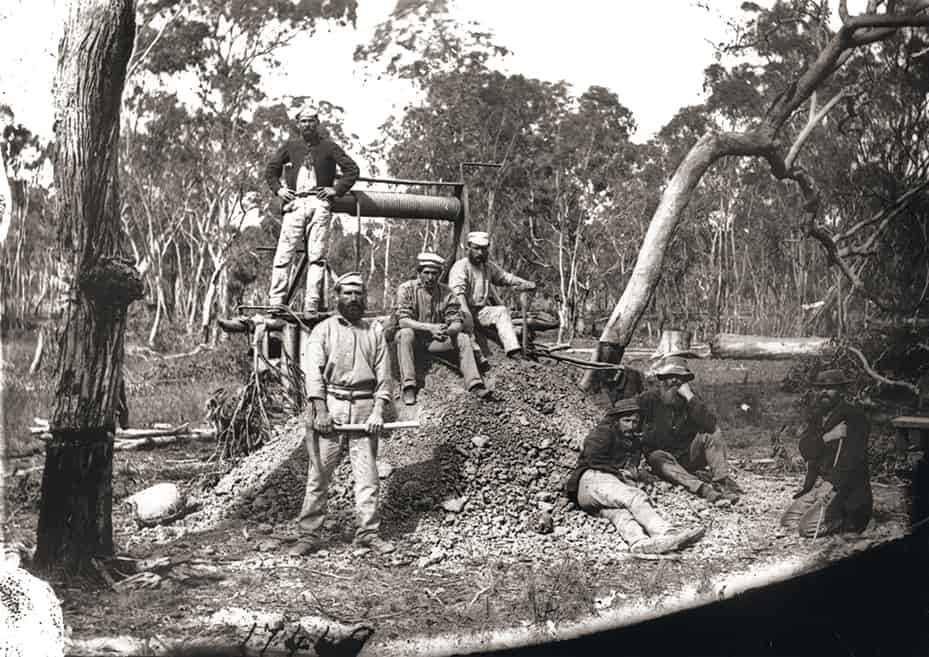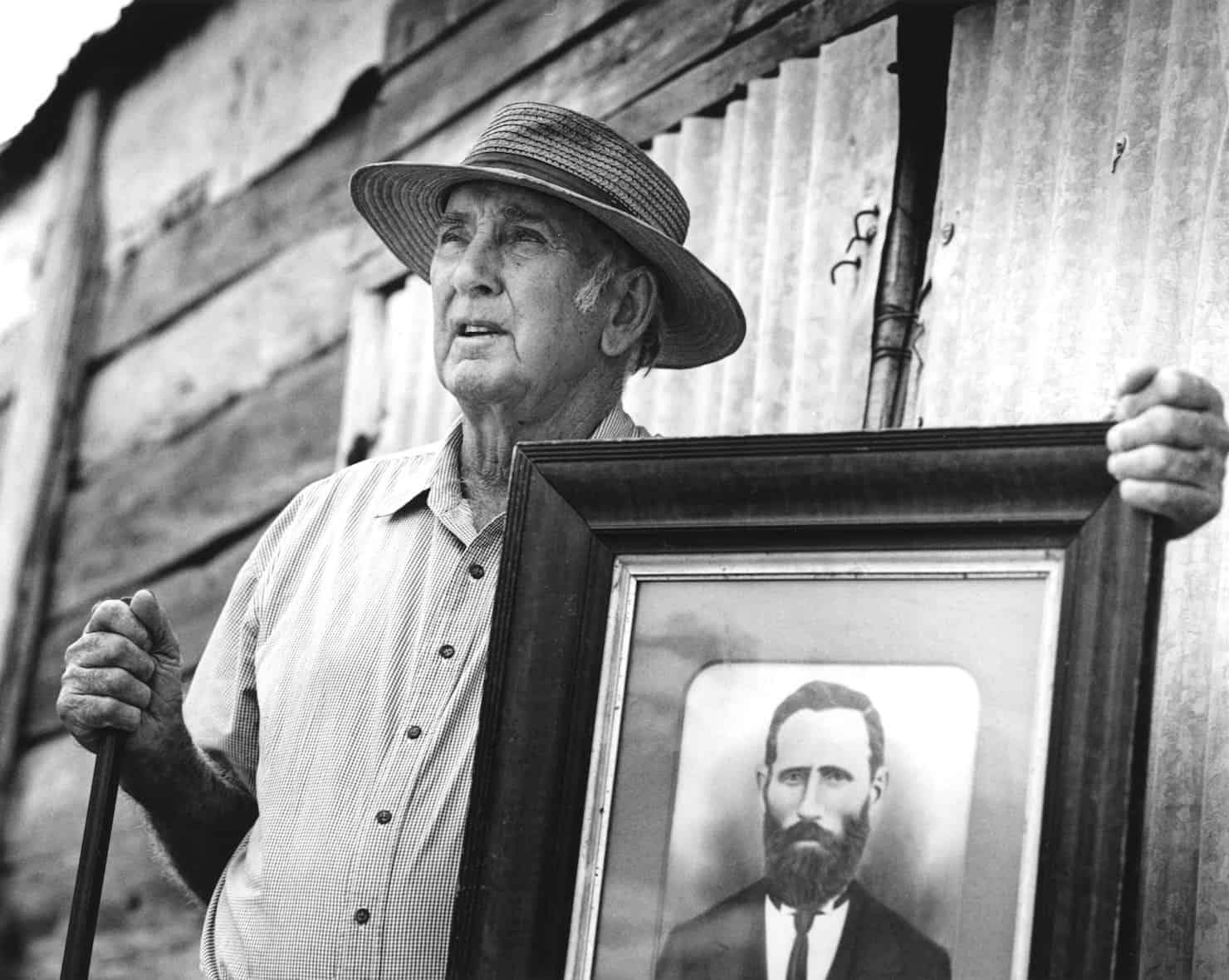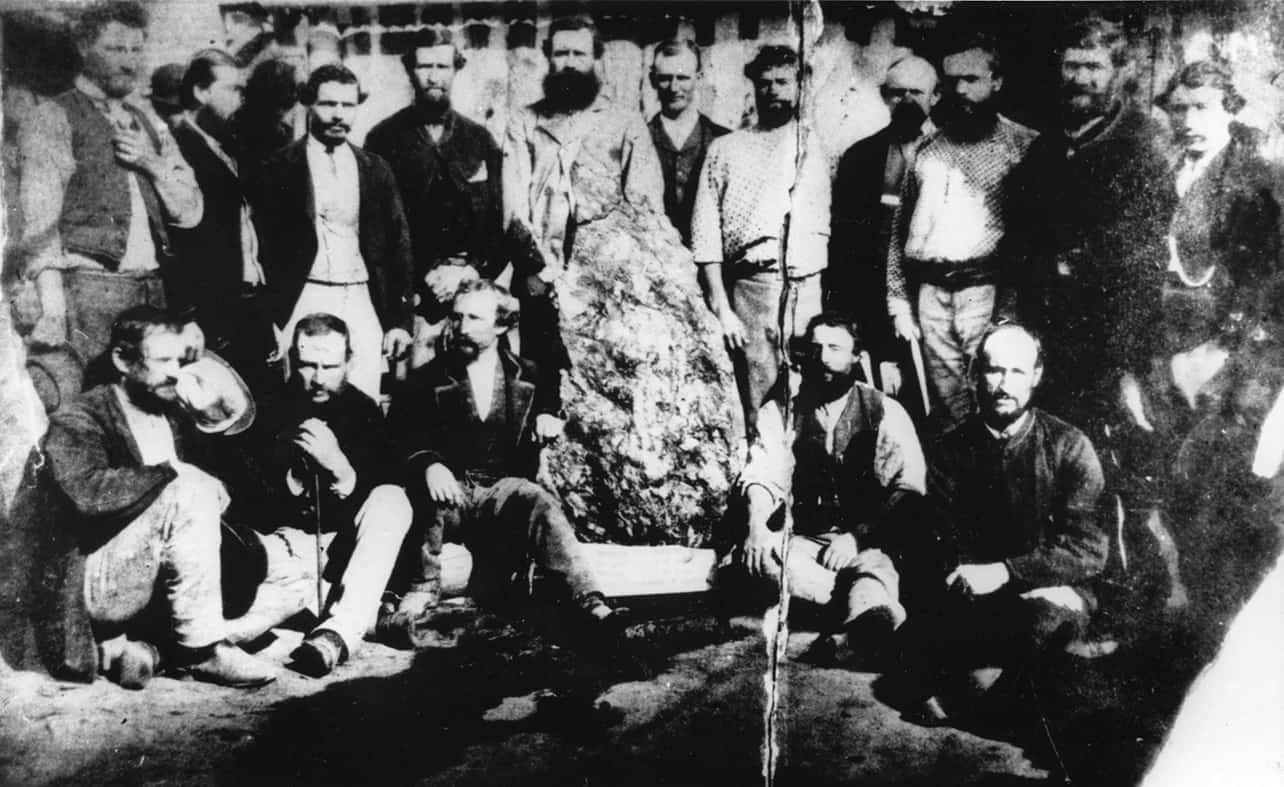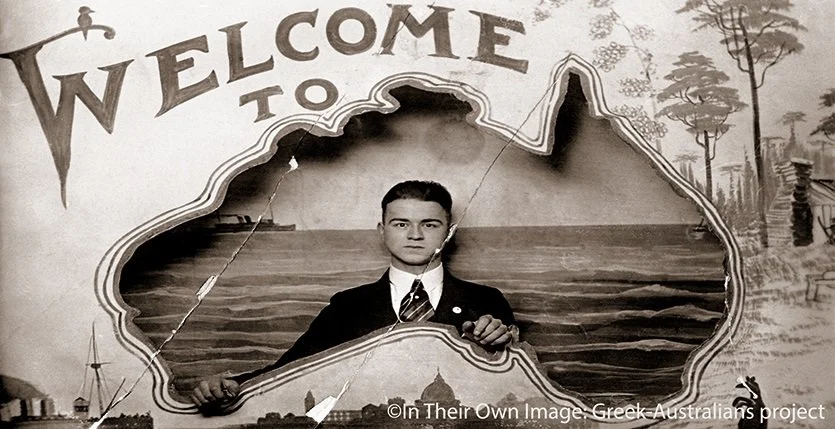Greek City Times is proud to present a weekly historical snapshot
from the archives of the ‘In Their Own Image: Greek Australians’ national project
by photographer Effy Alexakis and historian Leonard Janiszewski.

Jeremiah Williams (standing, holding pick) arrived in NSW in 1863 aboard the ‘Boomerang’, possibly a coastal vessel (and if so, he must have arrived earlier in Australia on board another vessel). Born on the Ionian island of Kefalonia in 1835, he was naturalised in October 1876, his occupation being recorded as a ‘labourer’ at Tambaroora; Tambaroora and Hill End were twin gold mining towns on the NSW central-western goldfields, with the former having such a significant collective settlement of Greek miners on its northern outskirts, that the area became known as ‘Greek Town’. At one stage, Jeremiah was a partner in a goldmine with two Americans at Hill End’s Golden Gully.
Before arriving at Hill End–Tambaroora, Jeremiah had married Elizabeth Carty (who was Australian-born) in 1865 at Broulee, just south of Batemans Bay. He and Elizabeth settled in Hill End and eventually lived in a weatherboard cottage on the town’s Warry Road (which leads off Clarke Street to the Beaufoy Merlin Lookout). They had twelve children, some of whom were given Greek names. Jeremiah died at Hill End in 1901 and was buried at Hill End General Cemetery. His tombstone still remains.

Laurence George Williams is a grandson of Jeremiah Williams (Gerasimos Vasilakis).
“Grandfather was supposed to be a shipbuilder before he migrated to Australia... Mum and Dad told me that Jeremiah befriended a Welshman with the name Williams, and that's how the name changed... I knew that Jeremiah worked in the mines at Hill End and that he helped with the raising of the Holtermann ‘nugget’. Grandfather lived at the foot of Bald Hill at Hill End. His cottage is still standing – no one living there now... My Dad, George Williams, knew a lot of people in Hill End... Another Greek family, the Totolos family, lived near Dad's – they were friends... Can't speak any Greek – no Greek words... I'm just an ordinary Australian... everyone had to come from somewhere.”

Bernhardt Otto Holtermann, who had been born in Hamburg, is pictured with the Holtermann ‘nugget’ and the gang that unearthed the reef gold specimen in 1872; Holtermann is seated immediately to the left of the ‘nugget’, which had just been extracted from the Holtermann and Beyers mine. Jeremiah was one of two Greeks in the mine gang. The other, John Demas (Ioannis Dimosthenis Nanis), is standing fourth from the right.
The Holtermann ‘nugget’ was not a nugget of pure gold, but a reef gold specimen (which contains impurities) – the largest ever discovered.
Photos: Effy Alexakis
Historical Research: Leonard Janiszewski
© In Their Own Image: Greek-Australians National Project Archives
ABOUT EFFY ALEXAKIS & LEONARD JANISZEWSKI
Since the early 1980s, Effy Alexakis, a photographer, along with historian researcher Leonard Janiszewski, have been travelling around Australia photographing and collecting stories. They have also photographed Greek-Australians in Greece and documented some amazing histories. The images and text provide personal, diverse and powerfully moving insights, about opportunities, hopes and challenges. Collectively, these stories provide personal perspectives of a diasporic Hellenic identity. Their archive encompasses photography, both historical and contemporary, taped interviews and literary materials.
They have published 3 books and numerous articles, and their projects are ongoing. The photographs have been widely exhibited throughout Australia and in Greece.
VISIT THEIR LATEST PROJECT: Greek Cafés & Milk Bars of Australia | Facebook


